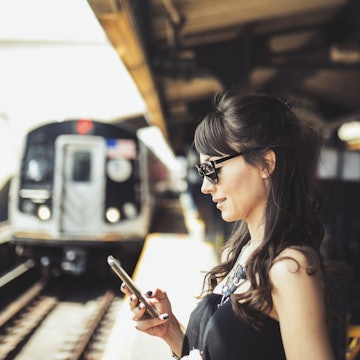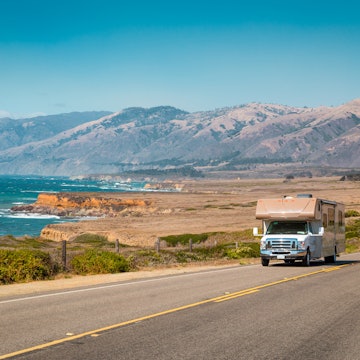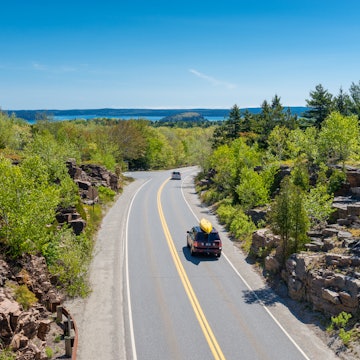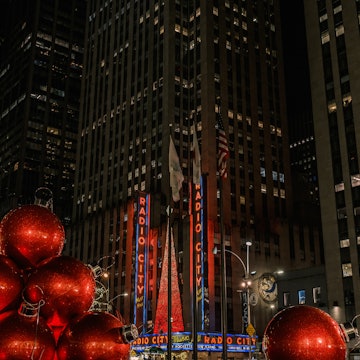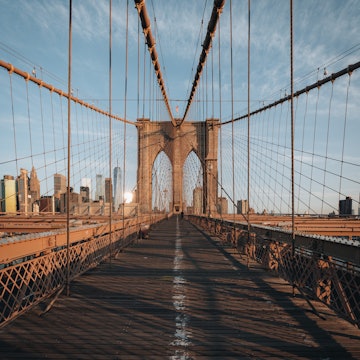

Driving 1-30 at night into Dallas. Westend61/Getty Images
Everything is indeed bigger in Texas, and nowhere is that more evident than Dallas’ sprawling highways, ever-present traffic, confusing toll roads and myriad transportation options. The notoriously car-centric city can be tricky to navigate even with your own vehicle, and for many travelers, public transportation ends up being the least stressful (and often faster) option.
While most neighborhoods aren’t particularly walkable or bike-friendly, Dallas does have a robust transit system. The city’s light rail and bus networks cover much of the urban core and extend into the suburbs, and there's a free trolley connecting downtown and Uptown. Whether you're driving, hopping on a train or calling an Uber, here’s everything you need to know about getting around the DFW metroplex.
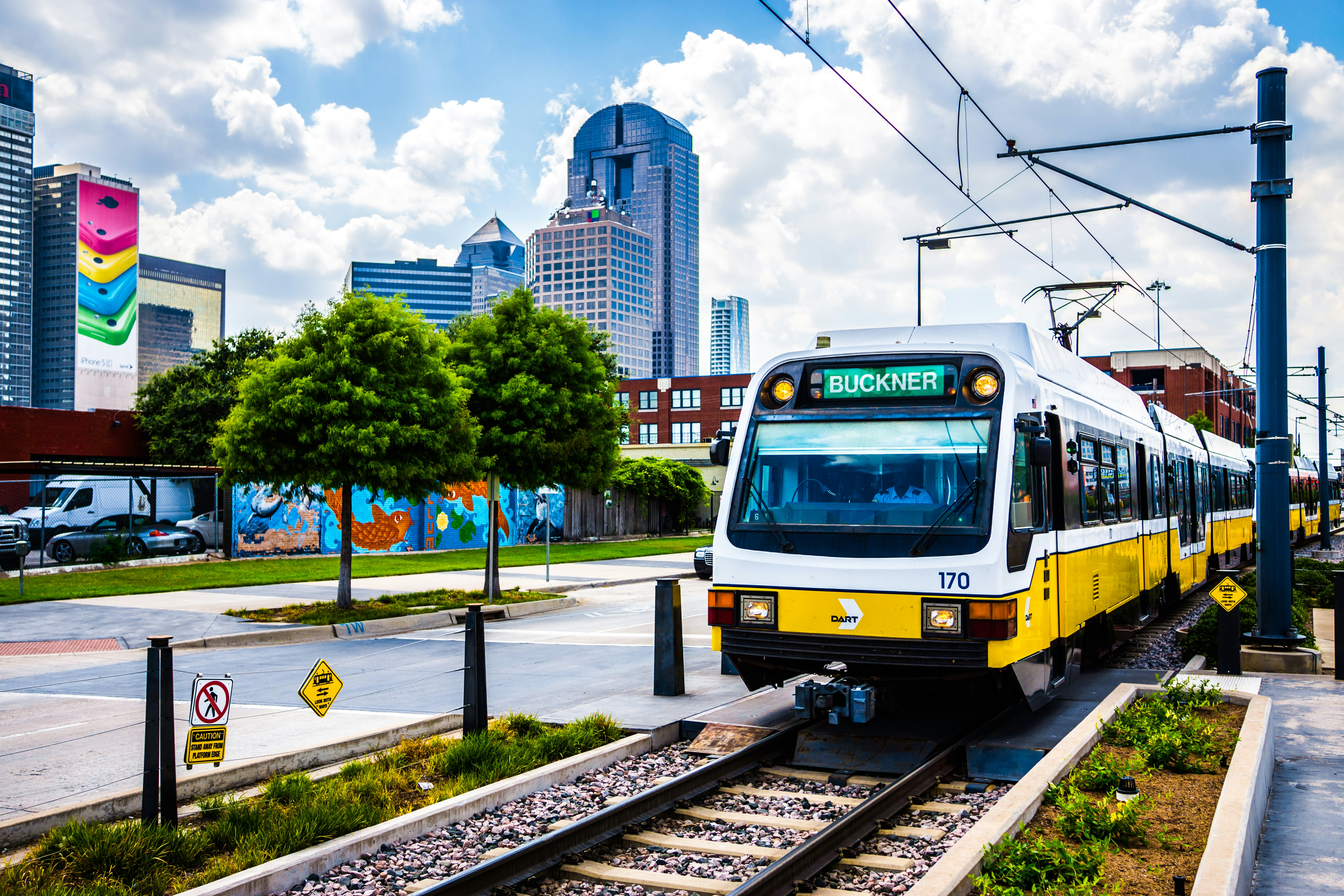
Use the DART light rail to travel between downtown Dallas and outer neighborhoods
Dallas’ DART light rail isn’t quite as fast or frequent as some major cities’ systems (Chicago’s “L” trains and NYC subways are prime examples), but with four lines stretching outward in a spoke pattern from downtown, it offers solid coverage across the metro area. Designed for suburban commuters rather than daily city trips, DART lacks limited-stop express service. While it’s handy for getting to and from downtown, trips across the city take considerably longer. Trains run roughly from 4:30am to 1am, with slightly different weekday and weekend schedules.
Fares are affordable and easy to purchase through the GoPass app (for those who prefer physical cards, buy or reload at retailers across the city). Three-hour passes cost US$3 (€2.55), and local day passes run from US$6 to US$12 (€5 to €10). DART eliminated single-ride passes in spring 2025, though passengers can still purchase one-way fares for the streetcar and TRE.
The Trinity Railway Express (TRE) connects Dallas and Fort Worth. Trains run weekdays and Saturdays between T&P Station in Fort Worth and Dallas’s Union Station, with several stops in between, including DFW Airport. A regional pass covers both DART and TRE, making it the best option for exploring more of the metroplex.
Catch the bus for wider coverage – just don’t cut it too close
With more than 90 fixed routes serving 13 cities across the DFW metro, DART buses go where light rail doesn’t. Routes range significantly from high-frequency urban lines to weekday-only commuter express service connecting downtown Dallas to outlying suburbs like Plano and Addison. Buses run every 15 to 60 minutes depending on the route, but temper your expectations – DART buses are famously not on time, just as likely to arrive early as they are late. Try to get to your stop 10 minutes ahead of schedule to allow for some wiggle room.
As with the light rail, DART simplified fares in spring 2025 and eliminated single-ride options. Instead, choose from a three-hour, daily or monthly pass. Use the DART Transit app in conjunction with Google Maps for route planning and real-time bus tracking, and purchase fares in the DART Pass app.
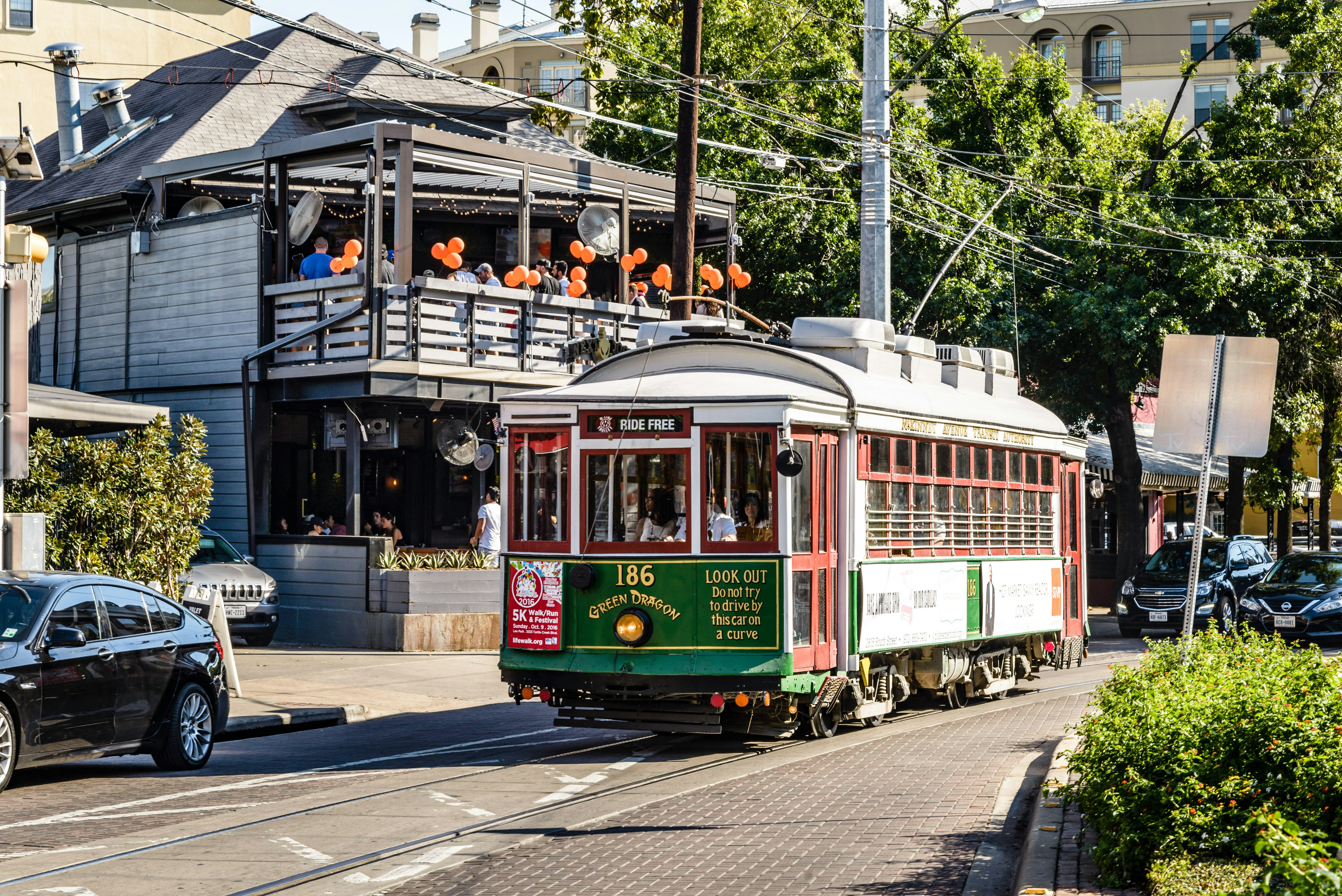
Ride a vintage trolley through Uptown (for free!)
Operated by McKinney Avenue Transit Authority (MATA), the free hop-on, hop-off M-Line Trolley runs historic streetcars between Uptown and the Arts District downtown. Aside from being free, it’s a fun, memorable way to explore the city, especially since many top attractions – including the Dallas Museum of Art, Katy Trail and excellent shopping – are within walking distance of the route.
Trolleys run 365 days a year and typically arrive every 17 to 20 minutes. Just wait at a stop, hop on when the trolley arrives and ring the bell or overhead string when you’re ready to get off. MATA suggests riders “name their fare,” so if you can, drop some change or small bills in the fare box to support the service.
You can bring along strollers, bikes and even well-behaved, leashed or crated pets. Conveniently, all M-Line stops are also within walking distance of DART’s Red, Blue, Green or Orange lines.
Driving offers flexibility, but expect traffic and tolls
Dallas is a car city. Full stop, no “but” or “however.” The metro area is vast, and while public transit continues to expand and improve, driving remains the most convenient way to get around for many people. That convenience comes with caveats, though.
Traffic is a fact of life here, especially during the long weekday rush hours (roughly 6:30am to 9am and 3pm to 6:30pm). Major highways like I-35E, I-30 and the Dallas North Tollway regularly gridlock, and unexpected slowdowns are common even outside peak hours.
Another aspect of driving in DFW: toll roads. Dallas has several – Dallas North Tollway (DNT), Sam Rayburn Tollway (SRT) and President George Bush Turnpike (PGBT) are some of the most-used – and they’re all cashless. Look into getting a toll pass, because without one, you’ll get a bill by mail within a few weeks of using a toll road at a much higher rate than passholders pay. Toll rates vary depending on the road and time of day, with some charging per mile and others using flat rates or demand pricing, when tolls increase during rush hour.
The North Texas Tollway Authority’s (NTTA) TollTag is the most common option in north Texas, while TxTag also works on most toll roads, although users complain about it being consistently buggy. Many passes from neighboring states are compatible, too, like widely-used PIKEPASS and Kansas’ KTAG. Renting a car in Dallas? Be sure to ask about how tolls are handled.
While parking is generally more affordable than in cities like New York or San Francisco, free spaces downtown are exceedingly rare. Park in a garage or paid lot when possible, and use apps like SpotHero or ParkMobile to find open spaces.
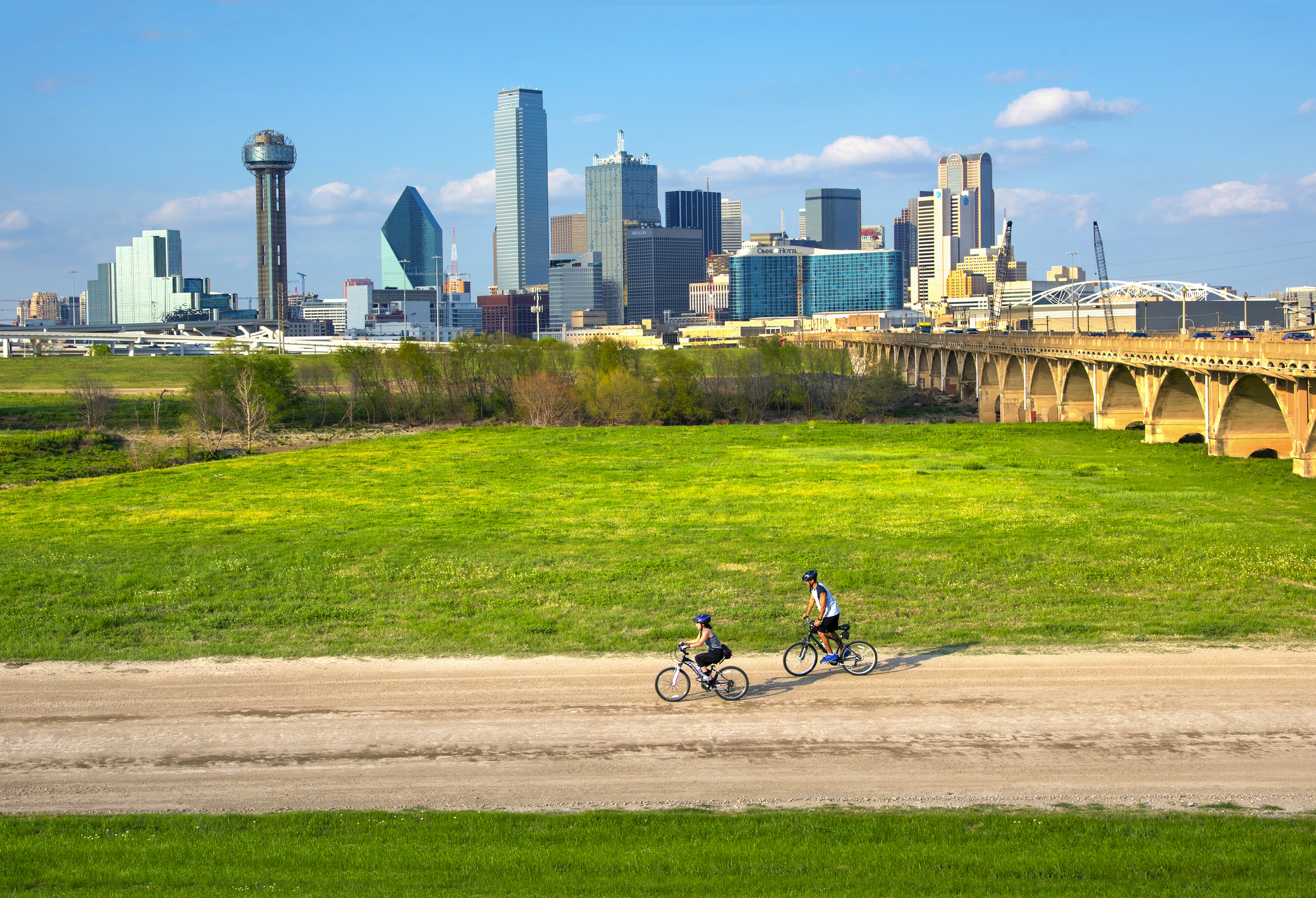
Frequently asked questions
Is Dallas pedestrian or bicycle-friendly?
Walking is both doable and enjoyable in several Dallas neighborhoods, including downtown, Bishop Arts, Knox-Henderson, Uptown, Greenville and State Thomas. Your best bet is to drive or take public transit to one area, then explore on foot from there. As for biking, while the city still has a long way to go, it was certified as a Bronze-Level Bicycle Friendly Community in 2025. Multi-use paths like The Loop and Katy Trail offer scenic cycling routes, and bike parking continues to pop up citywide.
Can you get to the airport on public transit?
DART serves both major Dallas airports. To get to DFW, take the Orange Line train to DFW Airport Station at Terminal A. Trains run from around 4am to 1:30am daily. For Dallas Love Field, take the Green or Orange Line to Inwood/Love Field Station, then hop on the free Love Link shuttle (Bus Route 5) for a quick 10-minute ride to the terminal.
Accessible transportation in Dallas
Dallas’s sprawl, interstate layout and long distances from A to B prove particularly challenging for travelers with disabilities. However, the downtown core is fairly easy to navigate, and compared to other major cities, DART’s public transit offers solid accessibility support.
All DART buses and trains comply with ADA standards. Buses have wheelchair ramps or lifts, designated seating and places to secure mobility devices, while light rail cars feature low-floor boarding zones and priority seats. Service animals are also welcome aboard. Passengers with disabilities (as well as seniors and Medicare cardholders) can apply for reduced-fare 3-hour, daily and 31-day passes, which apply across buses, light rail, and TRE.
For travelers who cannot use fixed-route services, DART Paratransit offers curb-to-curb and shared-ride service across the metro, including to DFW Airport. Certified users and caretakers can use this service for free, booking trips on demand online or over the phone. The Mobility Ambassador Program provides free training to help riders confidently plan routes, pay fares and travel.









